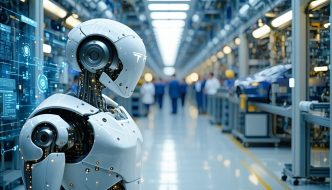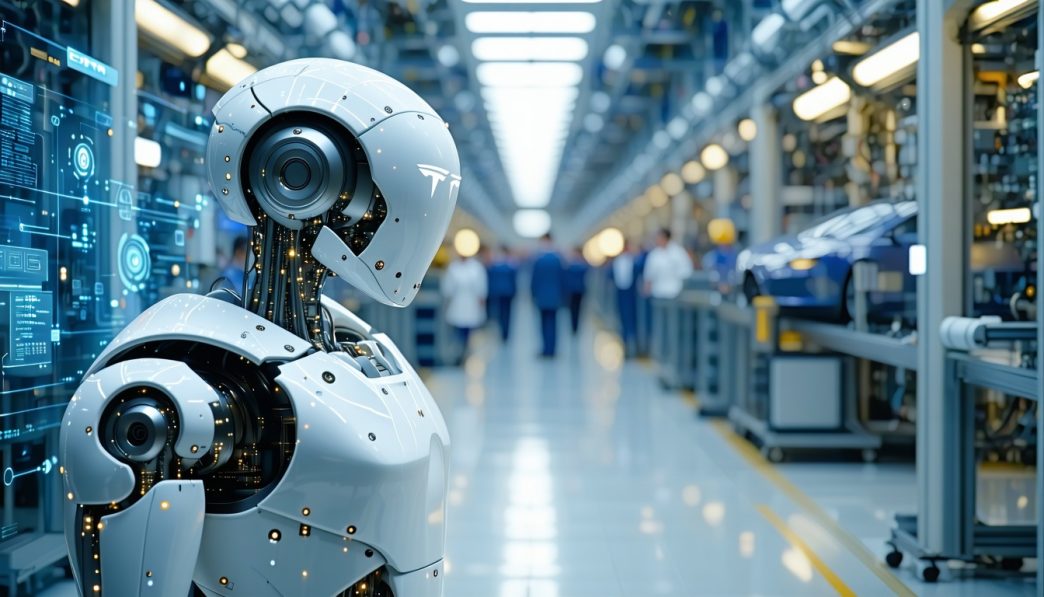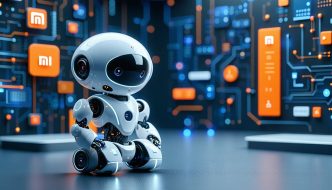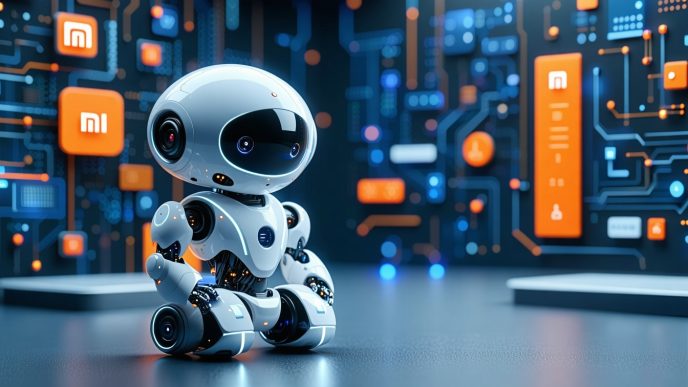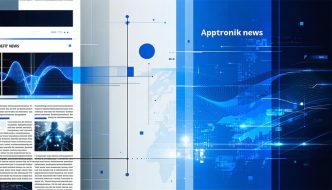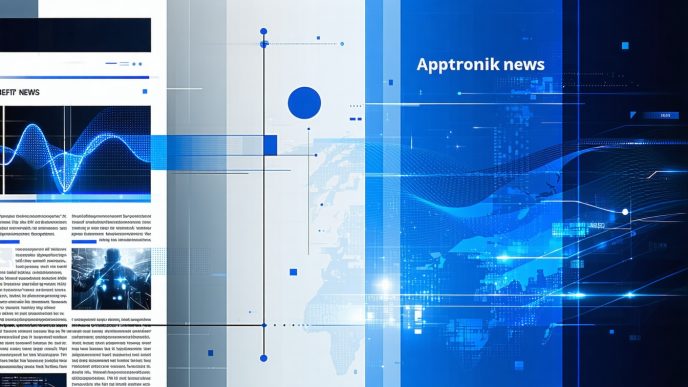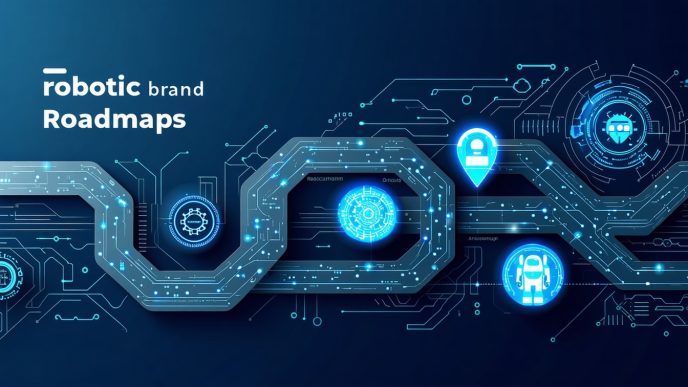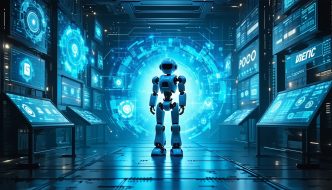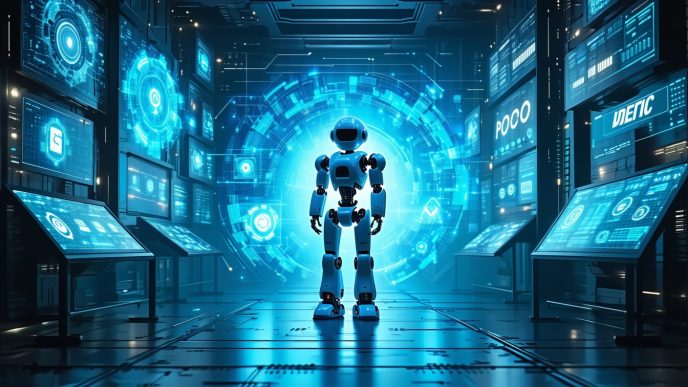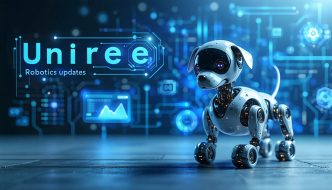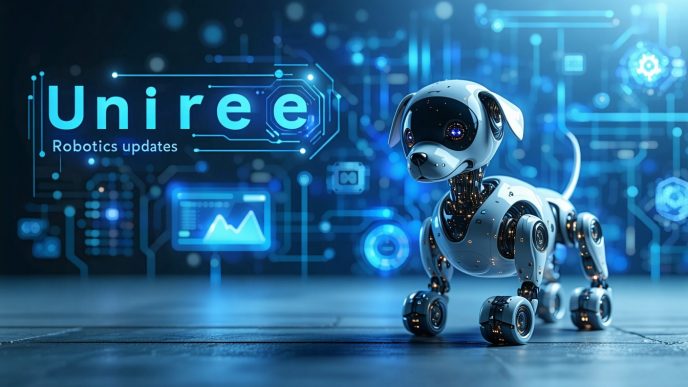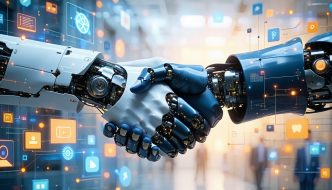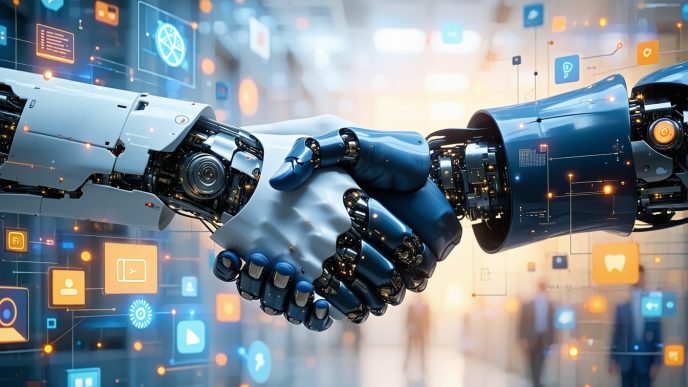The Latest from Tesla Robotics
Overview of Tesla’s Recent Announcement
Tesla made a significant announcement regarding its advancements in robotics, specifically focusing on its robotics project known as Optimus. The company revealed new updates that outline its strategy and expectations for this innovative venture. The announcement included key technical specifications, development timelines, and potential applications of the Optimus robot, which is designed to perform various tasks in both industrial and domestic settings.
| Key Updates | Details |
|---|---|
| Project Name | Optimus |
| Primary Function | General-purpose robot |
| Target Launch Date | 2024 |
| Expected Use Cases | Manufacturing, Home Assistance |
These updates have generated excitement within the tech community and among investors who closely monitor robotics brand announcements.
Significance of Tesla’s Future Plans
The implications of Tesla’s plans for its robotics division are vast. By expanding into robotics, the company aims to not only enhance its existing product lines but also to position itself as a leader in the emerging robotics sector. Tesla’s investment in robotics technology reflects its commitment to innovation and its desire to create smarter, more efficient systems.
This initiative aligns with broader trends in automation and AI, indicating a shift toward more integrated technology solutions. The potential for Optimus to revolutionize industries could lead to increased demand for automation solutions, consequently influencing market dynamics and competitive strategies.
| Strategic Goals | Expected Impact |
|---|---|
| Enhance Automation | Improve operational efficiency across sectors |
| Expand Market Presence | Solidify Tesla’s position in robotics |
| Foster Innovation | Encourage advancements in AI and robotics technology |
For those tracking developments in robotics, including Unitree robotics updates and other related innovations, Tesla’s foray into this field signals a critical moment in the evolution of robotic technology. As more news unfolds, industry observers can anticipate how these advancements will shape competitive landscapes and user experiences in robotics.
Optimus Unveiled
Introduction to Tesla’s Robotics Project, Optimus
Tesla’s recent announcement regarding their robotics project, Optimus, has generated significant buzz within the tech community. This initiative represents Tesla’s venture into the realm of robotics, positioning itself among the innovators in this rapidly evolving field. Optimus aims to create humanoid robots that can assist with a variety of tasks, ranging from manufacturing to personal assistance, reflecting the company’s commitment to automation and AI advancements.
Optimus is part of a broader strategy that aligns with Tesla’s ambitions of enhancing productivity and efficiency through technology. This project is intended to leverage Tesla’s existing expertise in artificial intelligence and machine learning, making it a noteworthy development in the landscape of robotics. For ongoing notifications and updates about various robotics brands, readers can explore robotics brand announcements.
Key Features of Optimus
Optimus is equipped with several innovative features designed to enhance its functionality and usability. Below is a summarized table highlighting some of the key characteristics of this robotics project:
| Feature | Description |
|---|---|
| Humanoid Design | Optimus is designed to resemble a human figure, allowing it to navigate and interact within environments built for people. |
| Advanced AI | Incorporates Tesla’s AI technology for improved learning capabilities and adaptability in various tasks. |
| Sensitivity and Dexterity | Capable of performing delicate tasks, demonstrating fine motor skills similar to those of a human. |
| Autonomous Navigation | Uses sensors and cameras for real-time environmental awareness, enabling it to make decisions safely. |
| Task Versatility | Designed to handle various jobs in different sectors, making it adaptable to numerous applications such as logistics, caregiving, and assembly. |
Tesla’s progress in the robotics field, particularly through Project Optimus, continues to draw attention from investors and technophiles alike. The integration of robotics into Tesla’s business model is seen as a strategic move to broaden its influence and reach in technology. For updates related to other robotics initiatives, such as figure ai announcements or apptronik news, exploring similar articles can provide further insights.
Tesla’s Vision for Robotics
Tesla’s recent strides in the robotics sector have caught the attention of the tech community, particularly in light of its ambitious plans for the future. The company’s strategy is built around enhancing automation and integrating robotics into everyday life while addressing significant industry challenges.
Insights into Tesla’s Robotics Strategy
Tesla’s approach to robotics focuses on leveraging its expertise in artificial intelligence and machine learning to create innovative robotic solutions. The company aims to develop robots that can perform tasks traditionally done by humans, thereby increasing efficiency in various sectors such as manufacturing, logistics, and domestic environments.
A key aspect of this strategy involves the use of cutting-edge sensors and advanced algorithms to enhance machine perception and decision-making capabilities. By continually refining its technology, Tesla seeks to set a new standard in the robotics field.
| Strategic Focus Area | Description |
|---|---|
| AI Integration | Utilizing advanced AI to improve robotic functionality. |
| Automation Enhancement | Increasing efficiency in various sectors through robotics. |
| Task Versatility | Designing robots capable of performing diverse tasks. |
How Tesla Plans to Transform the Robotics Industry
Tesla’s vision is not limited to creating standalone robots. The company envisions a future where robotics seamlessly integrates with existing systems and technologies. This holistic approach includes enhancing interoperability between robots and platforms, enabling them to communicate and work alongside each other effectively.
By focusing on collaboration between robotics and electric vehicle technology, Tesla aims to create a synergistic ecosystem that benefits both sectors. This could lead to pioneering developments in areas such as self-driving logistics and smart home automation.
To stay abreast of Tesla’s evolving plans and other robotics brand announcements, industry watchers should keep a close eye on the company’s progress. With Tesla’s resources and innovation capabilities, there is significant potential for groundbreaking advancements that may redefine existing paradigms in the robotics landscape.
As Tesla continues to push forward in the robotics domain, its impact will likely ripple through the industry, influencing competitors and inspiring new startups. Innovations in robotics can be expected to emerge, enhancing the interactions between humans and machines. To gain further insights into similar announcements by other tech giants, consider exploring news from competitors like Figure AI, Xiaomi, and Unitree Robotics.
Implications for Tech Enthusiasts
Impact on Tech Innovation
Tesla’s recent updates on its robotics project, Optimus, signal a notable shift in the landscape of technological advancement. The integration of robotics into Tesla’s existing ecosystem, primarily focused on electric vehicles and energy solutions, introduces new opportunities for innovation. This initiative presents significant implications for various sectors, including manufacturing, logistics, and home automation.
The introduction of advanced robotic capabilities could lead to improved efficiency and productivity, ultimately shaping how industries operate. The advancements in artificial intelligence and machine learning showcased in Tesla’s plans can inspire other companies to innovate, fostering competition and driving further technological breakthroughs. A summary of the anticipated innovations can be seen in the table below.
| Area of Innovation | Potential Impact |
|---|---|
| Manufacturing | Increased automation and production speed |
| Logistics | Streamlined operations and cost reduction |
| Home Automation | Enhanced user experience and convenience |
| AI Development | New algorithms for smarter robotics |
Potential Effects on the Robotics Market
The implications of Tesla’s robotics updates extend beyond its own operations and may significantly influence the broader robotics market. As Tesla forges ahead with its vision, it may challenge existing players in the industry, sparking a wave of new developments and business strategies.
Tesla’s approach, which emphasizes consumer-oriented applications and user-friendly designs, could change how robotics companies position their products. This shift might prompt startups and established firms alike to reevaluate their strategies, leading to increased investment in R&D to remain competitive. An overview of the potential market changes is presented in the table below.
| Market Aspect | Current Status | Expected Change |
|---|---|---|
| Competition | Diverse but fragmented | Increased competition and collaboration |
| Investment Trends | Focus on niche areas | Broader investment across various fields |
| Consumer Adoption Rates | Slow but growing | Accelerated adoption due to familiarity with Tesla’s brand |
Tech enthusiasts will closely monitor these developments, as they indicate a possible evolution in the capabilities and applications of robotics. With ongoing news regarding robotics brand announcements, investors and professionals will be keen to gauge Tesla’s impact on not only its sector but also on the future trajectory of robotics as a whole.
Analysis of Tesla’s Approach
Tesla’s endeavors in the robotics sector are garnering attention as they attempt to carve a distinct path within the competitive landscape. This section examines how Tesla’s strategies align with or differ from those of its competitors while also addressing the challenges and opportunities that lie ahead.
Comparing Tesla’s Strategy with Competitors
Tesla’s approach to robotics emphasizes scalability and integration with existing technologies, especially within its automotive line. Unlike some competitors who may focus solely on standalone robotic solutions, Tesla aims to leverage its advancements in AI and machine learning for broader applications. Below is a comparison of Tesla’s strategy against notable robotics competitors:
| Company | Focus Area | Strategy Type | Key Advantage |
|---|---|---|---|
| Tesla | Robotics & AI integration | Internal development & synergy | Established tech ecosystem |
| Competitor A | Standalone robots | Specialized product lines | Niche market focus |
| Competitor B | Consumer robotic solutions | B2C focus, quick adaptation | Rapid market entry |
| Competitor C | Industrial robotics | B2B partnerships | Strong legacy in automation |
Tesla’s integration strategies may offer it the upper hand, particularly when deploying robots across its manufacturing processes and automotive production lines.
Potential Challenges and Opportunities
While Tesla’s ambitions in robotics hold significant promise, they are accompanied by potential hurdles. Understanding these challenges and opportunities is essential for investors and enthusiasts monitoring the latest Tesla robotics updates.
| Factors | Challenges | Opportunities |
|---|---|---|
| Technological advancement | Keeping pace with rapid tech evolution | Pioneering transformative robotic solutions |
| Resource allocation | Balancing investments between auto and robotics | Maximizing synergies for cost-effective growth |
| Market acceptance | Overcoming skepticism from consumers | Expanding into untapped sectors |
| Competition | Facing well-established competitors | Leading innovations and setting industry standards |
With a clear vision and the ability to harness existing technologies, Tesla stands poised to influence the robotics landscape significantly. Engaging with market dynamics will be crucial as they navigate challenges and seek to capitalize on emerging opportunities. For further insights into various companies in this sector, explore updates on figure ai announcements and unitree robotics updates.
Looking Ahead
Speculations on Tesla’s Future in Robotics
The recent advancements in Tesla’s robotics division have sparked considerable speculation regarding its future trajectory. Analysts predict that Tesla Robotics will play a pivotal role in both consumer and industrial markets. With the unveiling of Optimus, it is anticipated that Tesla will further integrate artificial intelligence and machine learning into robotics, enhancing the capabilities of its machines.
Current trends suggest that Tesla may prioritize creating robots capable of complex tasks, which could revolutionize industries such as manufacturing, healthcare, and logistics. The incorporation of Tesla’s proprietary technology, including their advancements in AI from their automotive division, may position them favorably against competitors in the robotics space.
| Speculated Focus Areas | Potential Benefits |
|---|---|
| AI Integration | Enhanced Autonomous Functionality |
| Industrial Applications | Increased Efficiency in Production |
| Safety Features | Reduced Workplace Accidents |
| Cost Reduction | Decreased Labor Costs |
What to Expect Next from Tesla
Looking ahead, Tesla’s next steps in the robotics arena could include strategic partnerships and collaborations with tech firms to accelerate development. Such partnerships may focus on expanding the software capabilities of their robots, allowing for seamless interaction within digital ecosystems. The company is also likely to emphasize sustainability in its robotics initiatives, aligning with its broader corporate philosophy.
Upcoming announcements may reveal plans for pilot projects involving real-world applications of Optimus. There could also be updates regarding Tesla’s approach to scaling production of these robots. Investors and market watchers will be eager to see how these developments align with the broader trends in the robotics industry.
For ongoing coverage of various robotics initiatives and brand announcements, readers can explore our section on robotics brand announcements. This area will provide insights into how Tesla’s efforts stack up against those of other players, such as developments from Xiaomi and Unitree Robotics.
As Tesla continues to forge its path in the robotics landscape, the implications for market dynamics, enterprise innovation, and technological adoption will be significant. Keeping abreast of these updates will be crucial for stakeholders invested in the future of robotics and automation.

